When most people evaluate a car, their attention typically goes to the engine specs, fuel efficiency, infotainment system, or even how sleek the headlights look. What often gets overlooked—until it’s too late—is one of the most important components of the driver’s experience: the pedals.
These three simple mechanisms—the accelerator, brake, and (in manual vehicles) clutch—are the literal points of contact between your body and the machine. And yet, the way they are spaced, aligned, and integrated into the driver’s seating position is rarely talked about, even though it can make or break the driving experience.
Pedal ergonomics are about far more than just comfort. They’re about functionality, safety, and long-term health. Poorly spaced pedals can lead to foot cramps, ankle strain, knee misalignment, and even chronic back pain. Over time, the impact of bad ergonomics isn’t just a matter of discomfort—it becomes a matter of fatigue, reduced reaction time, and compromised control.
On the flip side, a car with thoughtfully spaced pedals can feel like an extension of your own body. The transitions between brake and accelerator become seamless, your legs rest at natural angles, and long drives feel significantly less draining.
Manufacturers vary widely in how much attention they pay to this critical aspect of design. Sports cars often prioritize quick foot transitions for performance but may ignore comfort during daily use. Compact cars sacrifice space for space-saving, and trucks, while offering roomier cabins, sometimes lack precision in pedal placement. The result is a mixed bag across the automotive landscape, where a luxury car might surprise you with poor ergonomics and an economy sedan might feel unexpectedly balanced.
In this article, we take a deep dive into both ends of the spectrum. First, we’ll highlight five vehicles with excellent pedal spacing, where comfort, usability, and driving enjoyment go hand in hand. These are the cars that get it right—balancing the physical mechanics of driving with long-term comfort.
Then, we’ll explore five vehicles that fall short, with layouts that contribute to foot fatigue, awkward posture, or general discomfort. These examples serve as reminders that flashy specs and strong engines can’t compensate for design flaws that impact the very foundation of your control over the vehicle.
This article is for everyone—commuters, road trippers, performance enthusiasts, and daily drivers—who have ever gotten out of a car and thought, Why do my legs feel like I ran a marathon? It’s a comprehensive look at one of the most underappreciated aspects of vehicle design, based not on numbers or marketing promises, but on real-world usability.
Because at the end of the day, your comfort behind the wheel starts at your feet. Let’s begin by exploring the five cars that set the standard for smart, spacious, and fatigue-free pedal layouts.
Also Read: 5 CV Joints That Take Abuse And 5 That Split Before 75K
5 Car Pedals With Great Spacing

1. BMW 3 Series (G20 Generation)
The BMW 3 Series, particularly the G20 generation (introduced in 2019), is a masterclass in how thoughtful German engineering can elevate the driving experience to a level that feels refined, intentional, and deeply satisfying. One of the most understated but crucial aspects of this experience is the layout and spacing of the pedals. The G20 maintains BMW’s signature driver-oriented cockpit, and this philosophy extends down to the driver’s feet.
The pedals—whether in the automatic or manual versions—are perfectly aligned with the steering column and driver’s seat. This alignment minimizes lateral leg strain and keeps the driver in a relaxed yet responsive position, which is critical for both everyday commutes and spirited driving sessions.
The spacing between the brake and accelerator is wide enough to prevent accidental inputs, but close enough to enable smooth transitions and even heel-and-toe techniques for enthusiasts.
Beyond the functional layout, BMW engineers have clearly considered long-distance comfort and performance agility in tandem. The brake pedal has a firm, progressive feel, and its placement allows for natural pivoting from the accelerator without lifting the entire foot off the floor.
This is a subtle but vital detail that reduces cumulative stress on the ankle and shin during long drives. Additionally, the dead pedal is wide, supportive, and angled in a way that promotes an ergonomically neutral position for the left foot.
Drivers who spend long hours on highways will especially appreciate the way this positioning promotes good posture and relieves pressure off the hips and lower back.
The balance in pedal height, angling, and response makes the G20 an ideal platform for both casual and performance-oriented drivers.
The result is a pedal arrangement that simply disappears beneath you in the best way possible—it feels so natural, so well-calibrated, that you don’t even notice it. And that’s perhaps the highest compliment one can give to any aspect of car ergonomics: it gets out of the way and lets you focus entirely on the road ahead.
In the G20 3 Series, everything from pedal stiffness to spacing reflects BMW’s pursuit of the “ultimate driving machine.” It’s a level of detail that contributes not just to performance, but to an almost subconscious sense of driving harmony that few competitors match in this segment.
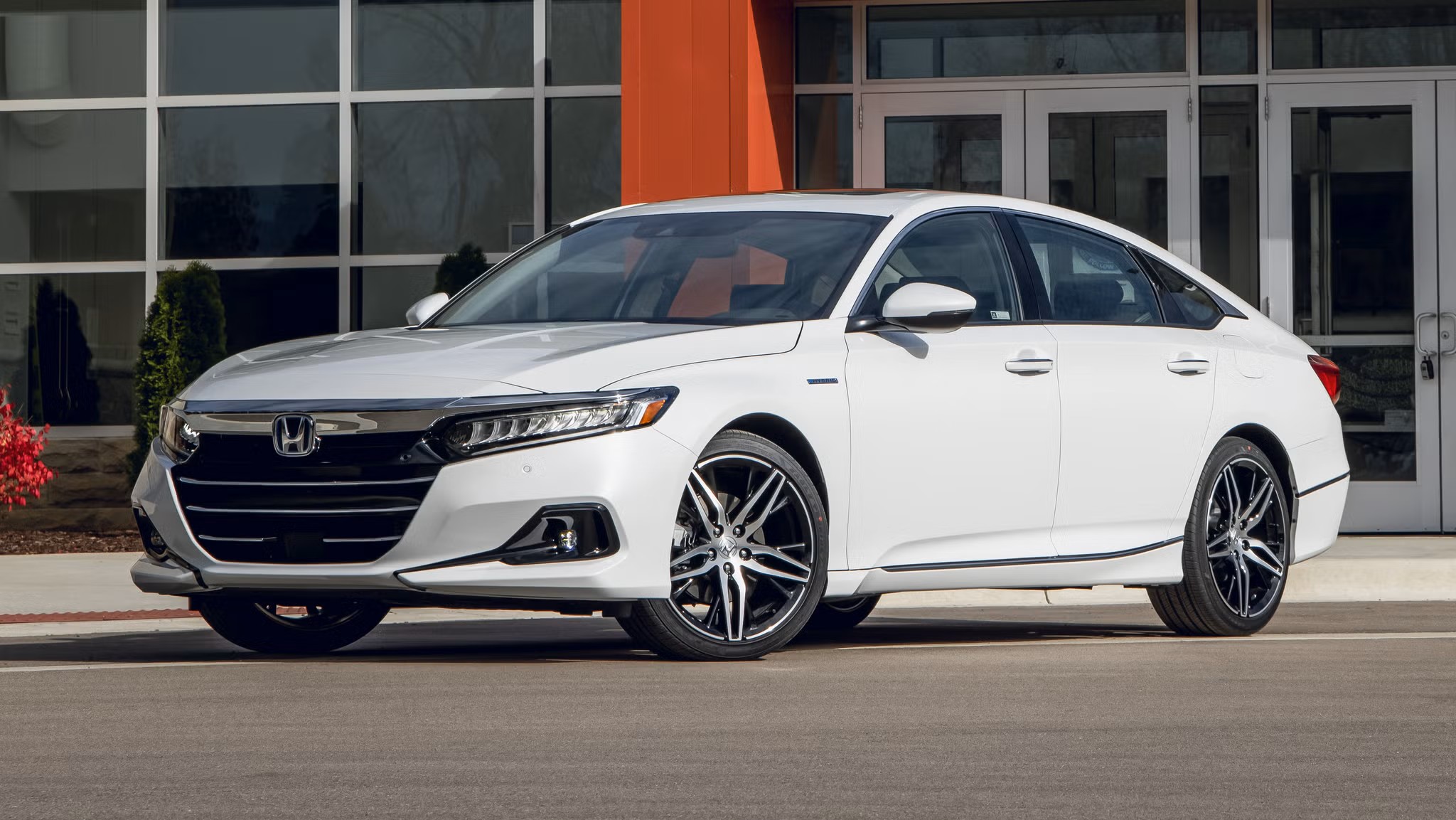
2. Honda Accord (10th Generation)
The 10th-generation Honda Accord is a striking example of how a practical, mass-market sedan can offer a driving experience that feels not only refined but also incredibly thoughtful in terms of comfort and usability.
While it doesn’t market itself as a performance car, the attention Honda has paid to the finer points, like pedal spacing, elevates its daily driving comfort to an impressive level.
Right from the moment you sit in the driver’s seat, it becomes clear that the cabin is designed around real human dimensions, not just generic measurements on a blueprint.
The pedals are not simply bolted onto the floor but are placed within a footwell that offers generous lateral space, reducing the chance of brushing your foot against the center console or door panel while driving.
This design is especially valuable for drivers with larger feet or those who spend significant time behind the wheel. The brake pedal is broad and intuitively positioned for a natural pivot from the accelerator, which itself is mounted at a height that minimizes the need for ankle articulation. This setup reduces fatigue, especially in stop-and-go traffic where constant transitions between pedals can otherwise lead to soreness in the arch and shin.
Importantly, the Accord’s pedals feel solid and responsive, with none of the spongy or vague sensations sometimes found in cars of this class. The responsiveness translates to more confident driving and, by extension, greater comfort since your body doesn’t have to overcompensate for imprecision.
Equally beneficial is the large, well-angled dead pedal that allows the driver to maintain a balanced, symmetrical posture while cruising. Many budget and even some luxury cars neglect this crucial detail, but in the Accord, the dead pedal helps anchor your leg, allowing you to relax your hip and knee during long drives.
This seemingly minor ergonomic decision helps reduce fatigue not just in the feet but throughout the lower body, and it highlights Honda’s understanding that real-world driving comfort often lies in these small, cumulative advantages.
For a car designed to serve families, commuters, and road-trippers alike, the Accord’s outstanding pedal layout proves that you don’t need a sports badge to feel good behind the wheel.
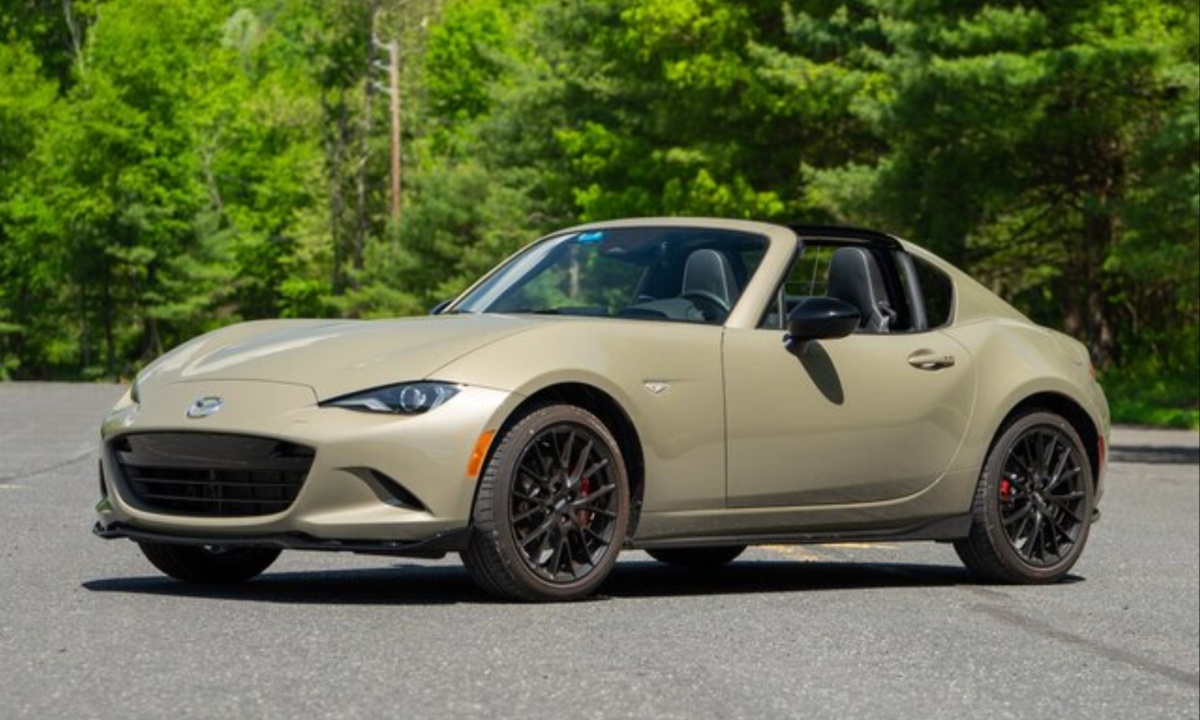
3. Mazda MX-5 Miata (ND Generation)
The fourth-generation Mazda MX-5 Miata, known internally as the ND generation, is one of the most beloved sports cars of the modern era—not because it’s the fastest or most powerful, but because it delivers pure, unfiltered driving pleasure. Central to this experience is the car’s human-centric design, and nowhere is that more evident than in the pedal setup.
Despite the car’s tiny footprint and low-slung dimensions, the ND Miata offers a pedal layout that feels tailor-made for enthusiasts. The three pedals are close together, yes, but not cramped—a subtle distinction that makes all the difference.
This careful spacing is intentional, allowing for advanced techniques like heel-and-toe downshifting while still being comfortable for everyday driving.
What sets the Miata apart is the balance between intimacy and usability. The accelerator pedal sits close to the transmission tunnel but is not overly recessed or angled in a way that requires awkward foot twisting. It feels light underfoot, allowing for precise modulation whether you’re inching through traffic or balancing throttle on a winding backroad.
The brake pedal, in contrast, has a firmer feel and is set at just the right height to allow your foot to pivot easily between it and the gas. This is vital in a car that encourages spirited driving and quick reflexes.
The clutch pedal is also a triumph—it’s light, progressive, and positioned so that long traffic jams won’t leave your leg burning. Perhaps most impressive is the fact that Mazda achieved all of this in a car that’s physically very small.
There’s no excess cabin space to play with, yet the driver never feels pinched or limited. That’s because Mazda’s engineers didn’t just think about how to fit three pedals into a tight space—they thought about how a driver would use those pedals hour after hour.
Even details like the angle of the dead pedal and the texture of the footrest contribute to a sense of control and relaxation that’s rare in any car, let alone a compact roadster. The ND Miata proves that good pedal design isn’t about space—it’s about intelligence, intent, and empathy for the driver’s body in motion.

4. Toyota Camry (8th Generation)
Often underestimated in terms of driver comfort and mechanical design, the 8th-generation Toyota Camry demonstrates that even a mainstream midsize sedan can excel in ergonomics when engineered with care. Toyota has always prioritized reliability and practicality, but with this generation of Camry, they added an extra layer of refinement, particularly in how the driver interacts with the controls.
The pedal spacing is remarkably generous, providing ample room for foot movement without inducing awkward angles or unnecessary flexing. Whether you’re stepping from a compact car or transitioning from a larger SUV, the pedal layout in the Camry feels intuitive and accommodating.
A standout feature is the consistent height and angling of the brake and accelerator pedals. This reduces the amount of dorsiflexion (ankle flex) required to switch between them, which is often a hidden cause of foot fatigue in other vehicles. The brake pedal is firm but not stiff, allowing for confident stopping power with minimal leg effort.
The accelerator offers a smooth response curve, enabling long-distance cruising with just the right amount of pressure. All of this makes a huge difference during extended drives, especially for those who spend hours on highways or city streets. In the Camry, your foot doesn’t need to hover or strain to reach the controls—it simply rests in a natural position that minimizes muscular tension over time.
Toyota also includes a dead pedal that is not just an afterthought, but an essential ergonomic feature. It’s wide, well-padded, and set at an angle that encourages proper foot alignment. This encourages better driving posture, distributes pressure evenly across your lower limbs, and relieves the lower back, an area often affected by poor pedal alignment.
These details might seem small, but their cumulative effect on driving comfort is significant. For a car not aimed at enthusiasts, the Camry delivers a surprisingly premium and thoughtful pedal experience. It reflects Toyota’s subtle evolution from a manufacturer of reliable appliances to one that increasingly considers the sensory and physical experience of the driver.

5. Ford F-150 (14th Generation)
The Ford F-150 has long been America’s best-selling vehicle, and part of that success comes from its ability to blend rugged utility with unexpected levels of comfort. The 14th generation of the F-150, introduced for the 2021 model year, takes this formula even further by refining cabin ergonomics to new heights.
A key feature that enhances comfort, especially for drivers who spend long hours behind the wheel, is its thoughtfully spaced pedal layout. Trucks often have large footwells by necessity, but Ford doesn’t take that space for granted. Instead, it uses it wisely, allowing the brake and accelerator pedals to be mounted in positions that feel natural, accessible, and relaxed.
A major innovation is the availability of power-adjustable pedals on higher trims, allowing drivers of varying heights to fine-tune the pedal distance relative to their seat and steering wheel. This isn’t just a luxury—it’s a health and safety feature that can help reduce knee and ankle strain by ensuring that your limbs operate in a natural arc.
The brake pedal is wide and perfectly centered, while the accelerator is angled to reduce overextension of the right foot. Even in work boots, drivers find the pedal spacing to be accommodating, allowing precise control without feeling cramped or awkward. The clutch, where available, is also surprisingly manageable for a vehicle of this size.
Complementing the excellent pedal spacing is an expansive dead pedal that acts more like a full footrest. It’s firm, spacious, and tilted just right to encourage relaxed posture. For those who use their trucks not only for job sites but for cross-country hauling, this is an invaluable detail.
It allows the driver to stay comfortable and alert during long hours of operation, whether towing heavy loads or navigating rural highways. In essence, the F-150’s pedal ergonomics bridge the gap between commercial utility and personal comfort, making it a standout example of how even a workhorse vehicle can provide luxury-like attention to the fundamentals of driving.
5 Car Pedals That Cause Foot Fatigue

1. Jeep Wrangler (JL Generation)
The Jeep Wrangler JL is iconic for its off-road prowess, rugged durability, and unmistakable design—but when it comes to on-road driving comfort, particularly in the realm of pedal ergonomics, the vehicle shows its utilitarian roots in less-than-flattering ways. The footwell in the Wrangler JL is notably narrow and constrained, a design that sacrifices everyday driving ergonomics for trail-ready compactness.
One of the most immediate issues a driver encounters is the misalignment between the seat, steering wheel, and pedal cluster. The pedals are noticeably skewed toward the center of the cabin, forcing the driver to angle their right leg inward for extended periods. This unnatural positioning can quickly lead to discomfort in the knee, hip, and ankle, especially during commutes or road trips longer than an hour.
For manual transmission versions, the problem is even more pronounced. The clutch pedal is positioned so far to the left that it crowds the edge of the footwell, leaving little room for smooth engagement.
Because of the vehicle’s high center tunnel and narrow cabin width, your left leg often has to twist uncomfortably to operate the clutch, which leads to strain on the calf and hip over time. Add to that a relatively stiff clutch spring, and even short bouts of stop-and-go traffic can become physically taxing.
The lack of a truly ergonomic dead pedal exacerbates the issue. In many Wranglers, the dead pedal is either poorly placed or practically nonexistent, leaving your left foot with no natural resting spot. As a result, drivers frequently resort to awkward leg positions that further aggravate fatigue and posture imbalance.
While the Wrangler is built to dominate rocks, mud, and snow with ease, its daily usability suffers from these ergonomic compromises. Long road trips on highways or extended city driving can become tiring affairs, not because of the suspension or noise, but because of the strain placed on your legs and feet.
It’s a classic example of a vehicle excelling in one environment while failing to meet the comfort expectations of another. For those who intend to use the Wrangler as a daily driver, it’s a reminder that good pedal layout matters just as much as off-road capability, particularly when your body has to adapt to suboptimal geometry every single day.
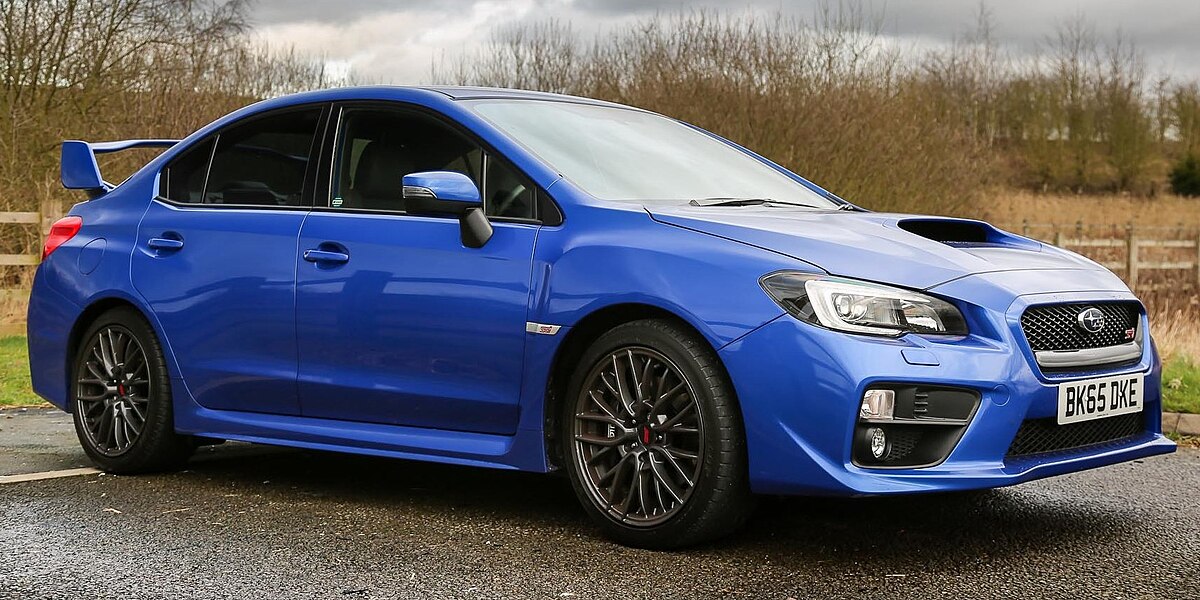
2. Subaru WRX (VA Generation)
The Subaru WRX VA generation (2015–2021) represents a compelling blend of rally-bred performance and all-weather capability, wrapped in a relatively affordable package. It’s a car built for driving enthusiasts who appreciate the immediacy of turbocharged power and all-wheel drive grip.
However, as much as it delivers on the performance front, the WRX falls short in one surprisingly critical area: pedal comfort. The ergonomic layout of the pedals in the WRX VA is flawed in ways that become increasingly apparent over time, particularly for those using it as a daily driver. The footwell is noticeably tight and angled in a way that doesn’t accommodate natural leg positioning, creating a sense of strain that builds gradually throughout a drive.
A common complaint centers around the clutch pedal, which is both stiff and placed uncomfortably far to the left. Drivers often find themselves having to swing their left leg into an exaggerated arc to fully depress the clutch, especially when sitting further back for proper seat-to-wheel distance.
This frequent contortion can lead to hip fatigue, especially in stop-and-go conditions. Additionally, the brake and accelerator pedals are too closely spaced laterally, which is particularly problematic for drivers with larger feet.
While this may benefit quick pedal transitions during aggressive driving, it results in constant readjustments and minor corrections during normal traffic, eventually leading to ankle strain and uneven pressure on the arch of the foot.
The WRX’s lack of a well-designed dead pedal further adds to the discomfort. While there is a small protrusion to the left of the clutch, it’s narrow and angled in such a way that it doesn’t provide meaningful support. This forces the driver to either hover their foot or place it flat on the floor at an unnatural tilt.
Over long drives, this poor foot support compounds other posture issues, leading to a general sense of physical fatigue. It’s a frustrating shortfall in a vehicle that otherwise excels at engagement and driver feedback.
Subaru designed the WRX for performance driving, but missed an opportunity to blend that with the daily comfort required by real-world users. Enthusiasts may overlook these flaws in favor of speed and fun, but for the average driver, they become a significant downside.
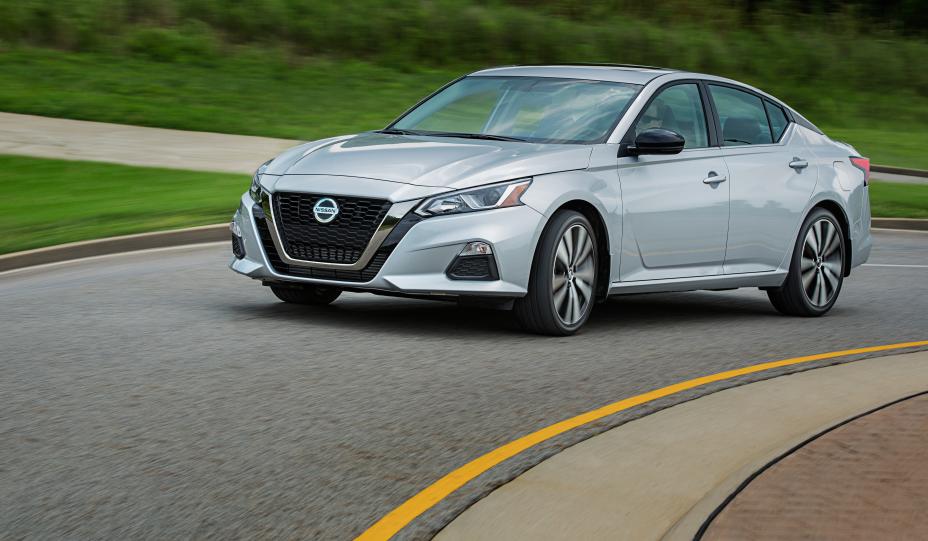
3. Nissan Altima (Pre-2019 Models)
Nissan’s Altima, especially in pre-2019 models, was marketed as a practical and reliable midsize sedan aimed at the masses—commuters, families, and everyday drivers. Yet, for all its utility, one of its most glaring ergonomic oversights lies in the pedal layout.
While the Altima boasts a roomy cabin in terms of head and shoulder space, the driver’s footwell is an entirely different story. It’s narrow, asymmetrical, and not particularly forgiving, especially for drivers with longer legs or wider feet.
The primary issue stems from the excessive closeness of the accelerator and brake pedals, which often feels more like a compact car than a midsize sedan. The lack of spacing requires the driver to angle the foot awkwardly inward to transition between pedals, and this misalignment gradually wears on the ankle and lower leg.
Over time, the cramped pedal arrangement leads to cumulative discomfort. Drivers have reported sharp fatigue in the heel and the balls of their feet, especially after highway drives requiring sustained pressure on the gas. The accelerator pedal, in particular, is mounted too close to the transmission tunnel, limiting the natural movement arc of the right leg.
Moreover, there’s little vertical variance between the brake and gas pedals, making the transition less fluid than it should be. These details might seem minor in isolation, but together they create a situation where the driver is constantly making micro-adjustments just to maintain comfort, which paradoxically makes driving more fatiguing the longer it goes on.
What exacerbates the problem is the complete lack of a usable dead pedal. In many trims, the area to the left of the footwell is either obstructed or poorly shaped, leaving the driver with no proper place to rest the left foot. This lack of foot support throws off body balance and encourages slouching or uneven weight distribution across the hips.
It’s especially problematic in city driving where starts and stops are frequent. All of these factors make the Altima an ergonomic outlier in its segment. While it may provide competent transportation from A to B, it does so with a pedal layout that undermines driver comfort in subtle but significant ways.
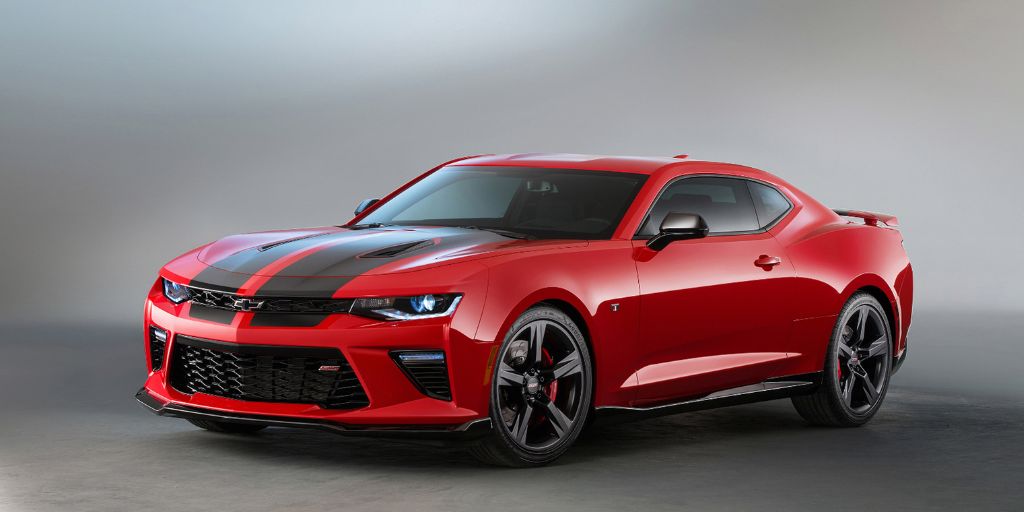
4. Chevrolet Camaro (6th Generation)
The 6th-generation Chevrolet Camaro is a visually stunning and power-packed machine that aims to deliver an American muscle experience with modern flair. But beneath its aggressive styling and roaring exhaust note lies a disappointing ergonomic truth, particularly for those behind the wheel. While the car is engineered for speed and agility, the driver’s footwell feels like an afterthought.
The issue stems from a fundamental mismatch between the cabin’s design and the body’s natural driving posture. The Camaro’s pedal box is notoriously narrow, with a floor shape that crowds the right leg toward the center tunnel. This forces the foot into an angled, pigeon-toed position when operating the gas pedal, leading to rapid fatigue in the knee and shin during even moderate driving sessions.
This compromised layout is especially jarring given the car’s otherwise performance-oriented character. The brake pedal is mounted near the accelerator, and although this can aid quick transitions on the track, it creates a cramped feel during daily commutes. The pedals are mounted low to the floor, requiring more flexion of the ankle and calf muscles than is comfortable over time.
Drivers who are tall or have larger shoe sizes will find the tight spacing especially irritating, with very little room for error or adjustment. Additionally, the car’s high transmission tunnel protrudes deeply into the footwell, further reducing lateral space and forcing drivers into contorted positions just to maintain pedal contact.
For those driving manual versions, the clutch pedal does not fare much better. It’s long, stiff, and set at a distance that requires the left leg to stretch awkwardly from a seated position. There’s little support from the seat bolstering or from the floor, making clutch operation feel more like a workout than a driving input.
To top it off, the dead pedal—if present at all—is small and positioned too high, failing to provide adequate support for long cruises. These shortcomings add up, turning what should be an exhilarating drive into an ergonomically frustrating experience. The Camaro might wow you with power and handling, but its pedal layout is a stark reminder that true performance requires comfort and control to be sustainable.
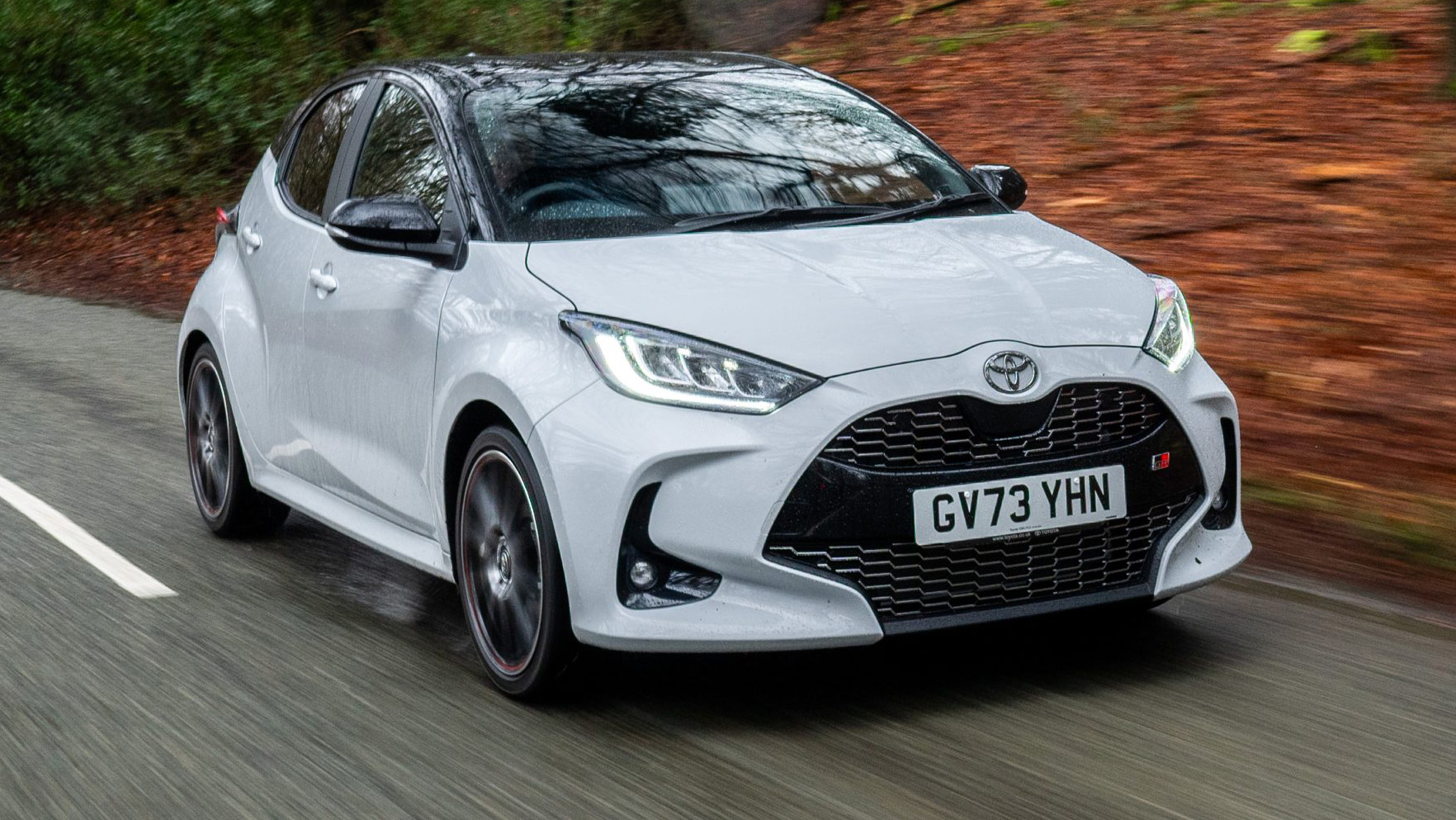
5. Toyota Yaris (Pre-2020 Models)
The Toyota Yaris has long been known for its reliability, efficiency, and compact footprint, making it a favorite for city dwellers and budget-conscious drivers alike. However, in pre-2020 models, the Yaris falls noticeably short when it comes to driver ergonomics, particularly in its pedal layout.
In attempting to squeeze functionality into such a small platform, Toyota made compromises that manifest as discomfort and fatigue during real-world use. The footwell in the Yaris is extremely tight, offering little room for movement and even less for natural leg positioning. For drivers of average or above-average height, this results in a posture that feels hunched, constrained, and rigid.
The accelerator and brake pedals are positioned far too close together, and both are relatively small in size. This narrow configuration can lead to unintentional inputs or the need to drive with toes pointed inward, which over time contributes to ankle and foot soreness. The pedal travel feels shallow, offering minimal feedback and requiring greater focus to ensure correct modulation.
The accelerator, in particular, is set very close to the transmission tunnel, meaning drivers often have to angle their right foot awkwardly inward just to maintain steady throttle pressure. These small deviations from ergonomic norms accumulate, leading to chronic discomfort, especially during longer drives where consistent pedal use is required.
Perhaps most problematic is the complete lack of a dead pedal or meaningful footrest. There is simply no designated place for the driver’s left foot, leaving it to either hover or sit flat against the floor at an unnatural angle. Over extended periods, this leads to fatigue not just in the leg, but throughout the lower back and hips due to the lack of structural support.
While these issues might seem tolerable on short city hops, they become glaring weaknesses on highway trips or in heavy traffic. The Yaris’s strengths in maneuverability and fuel economy are, unfortunately, offset by a driving experience that can leave your legs sore and your patience tested.
For all its virtues, the pre-2020 Yaris is a clear example of how compromised ergonomics can detract from usability, even in a car built for simplicity.
Also Read: 5 Driver Seats That Support Long Trips And 5 That Leave You Sore
As we’ve seen, pedal spacing isn’t just about performance or convenience—it’s a fundamental part of how a car feels. It influences not only how we interact with the vehicle, but also how our bodies respond during and after the drive.
When designed thoughtfully, pedals allow our feet, ankles, and legs to move naturally and fluidly, minimizing fatigue and maximizing control. When poorly designed, they create a chain reaction of discomfort, forcing the body into unnatural positions that leave us aching, frustrated, or even at risk in emergencies.
The difference between great and poor pedal spacing often lies in subtle details: the angle of the dead pedal, the lateral distance between the brake and accelerator, the height and resistance of the clutch, and even the amount of toe room beneath the dashboard.
All of these elements contribute to whether a driver can sit comfortably for hours or whether they find themselves constantly shifting, adjusting, and stretching to relieve pressure points. These aren’t just small annoyances—they’re signs of whether a car was engineered with the driver’s long-term well-being in mind.
The five cars with excellent pedal layouts—like the BMW 3 Series, Mazda MX-5, and Ford F-150—demonstrate what happens when engineers prioritize the human body as much as the mechanical one. These vehicles not only feel better to drive, but they also help you stay sharper and more focused, which translates to safer, more confident journeys.
On the other hand, the cars with poorly designed pedals—like the Jeep Wrangler, Subaru WRX, and Toyota Yaris—remind us that even popular models can get the basics wrong. Whether due to cost-saving measures, packaging constraints, or legacy design habits, these missteps lead to foot fatigue, muscle strain, and a diminished driving experience over time.
So next time you’re test-driving a car, take a moment to focus not on the horsepower or the dashboard screen, but on something far simpler: your feet. Are you able to rest naturally? Do your ankles sit at a comfortable angle? Can you pivot between pedals without strain? These answers will tell you more about your long-term relationship with the vehicle than most brochures ever could.
Ultimately, driving is a physical activity. No matter how advanced a car becomes with sensors, automation, or luxury finishes, if it fails at the basics of human comfort, starting with the footwell, then it fails to serve the driver in the most fundamental way. Let’s hope that more automakers begin to recognize what the best already know: every great drive begins with a solid foundation beneath your feet.

